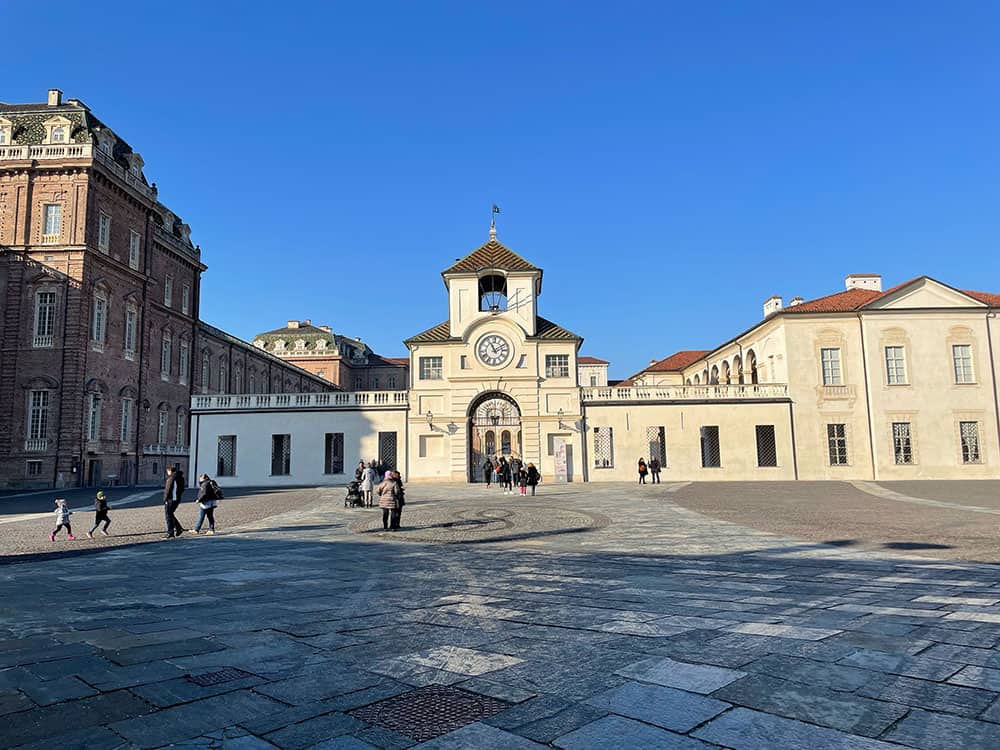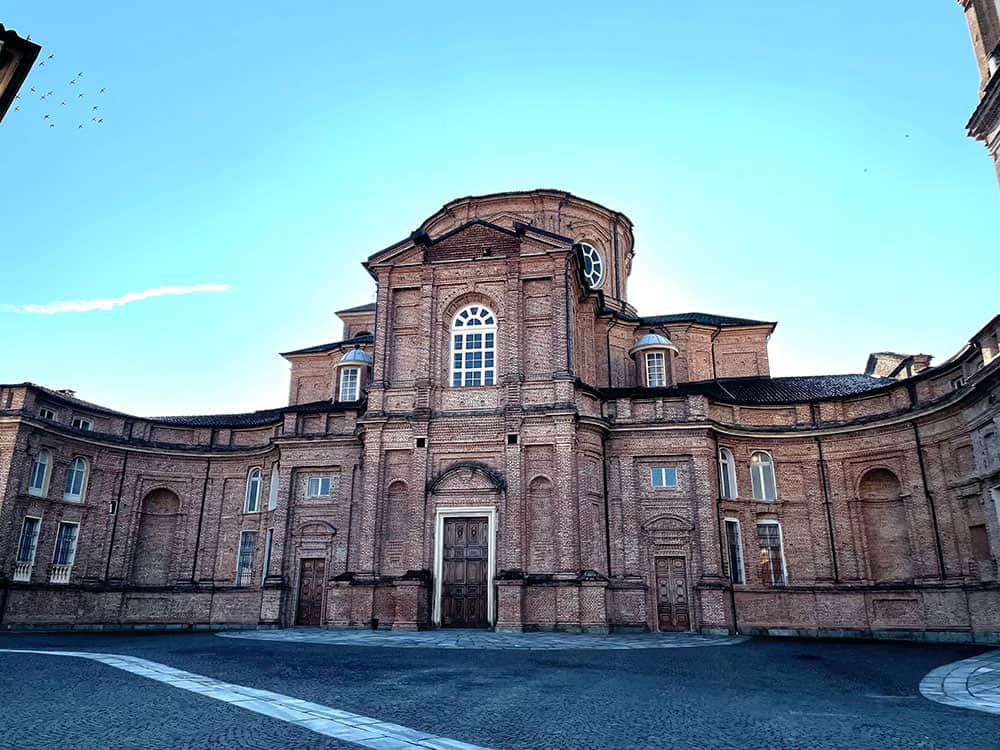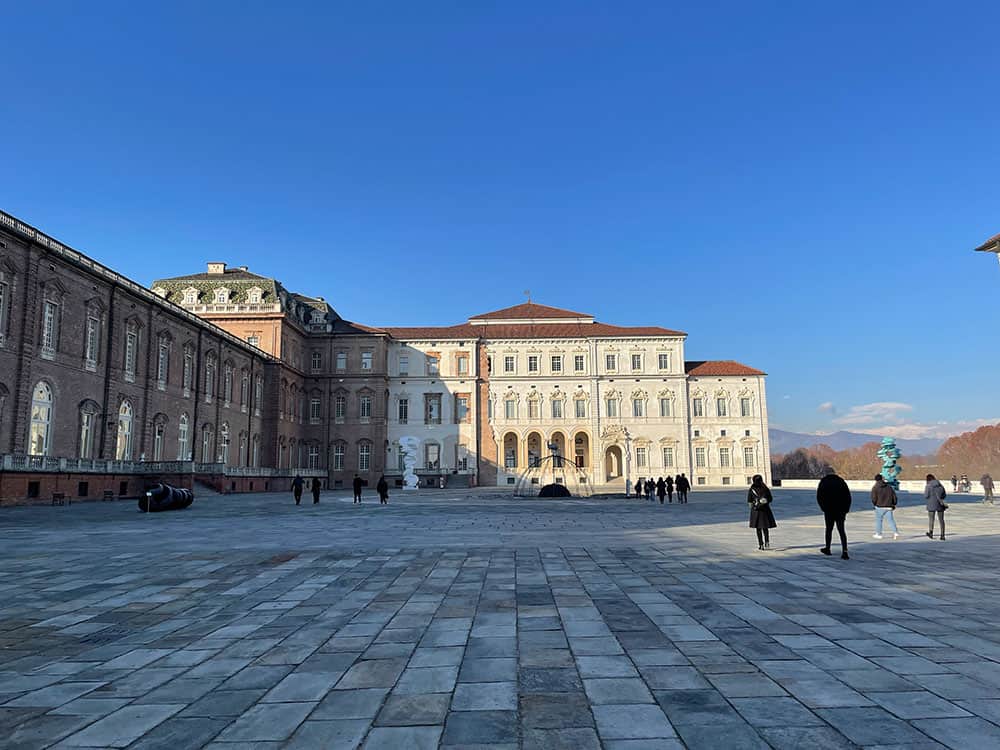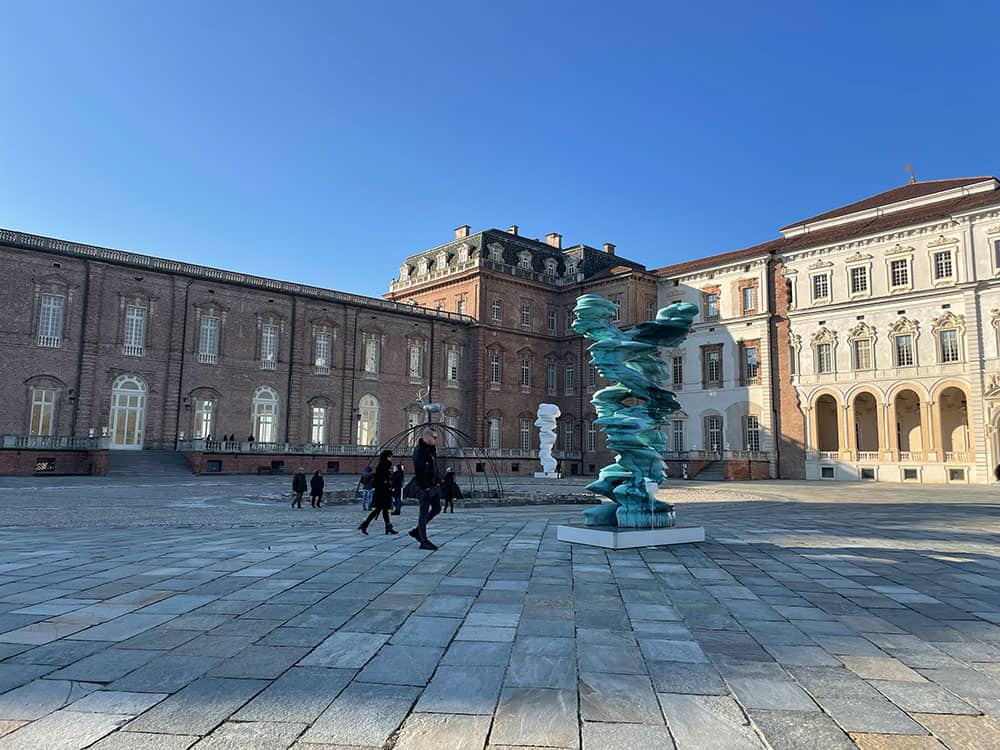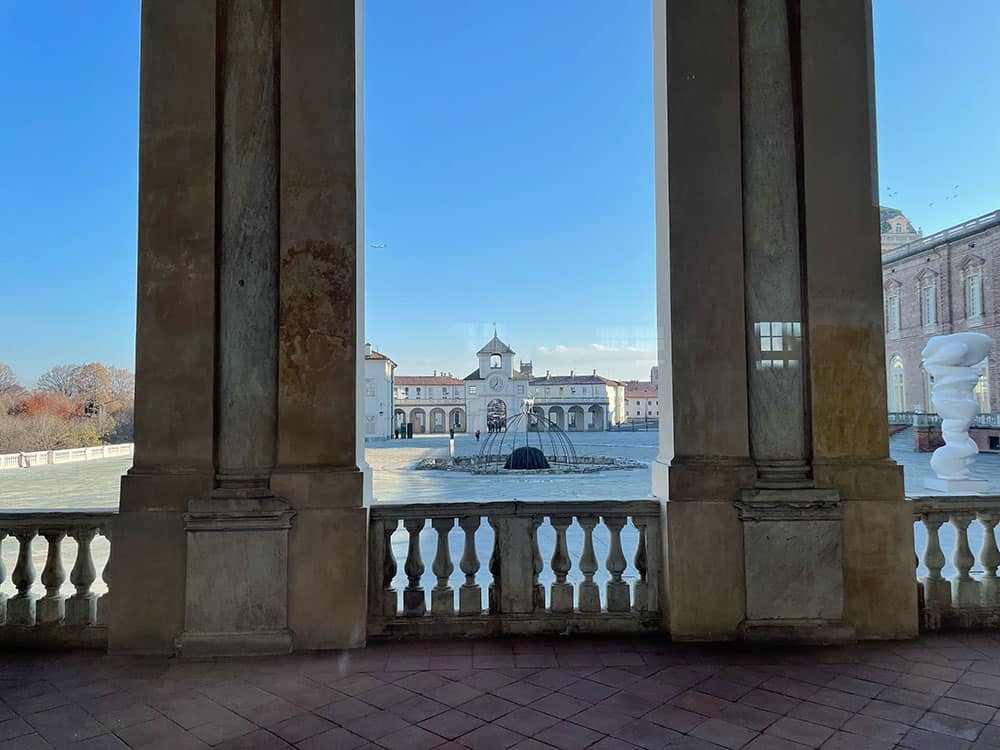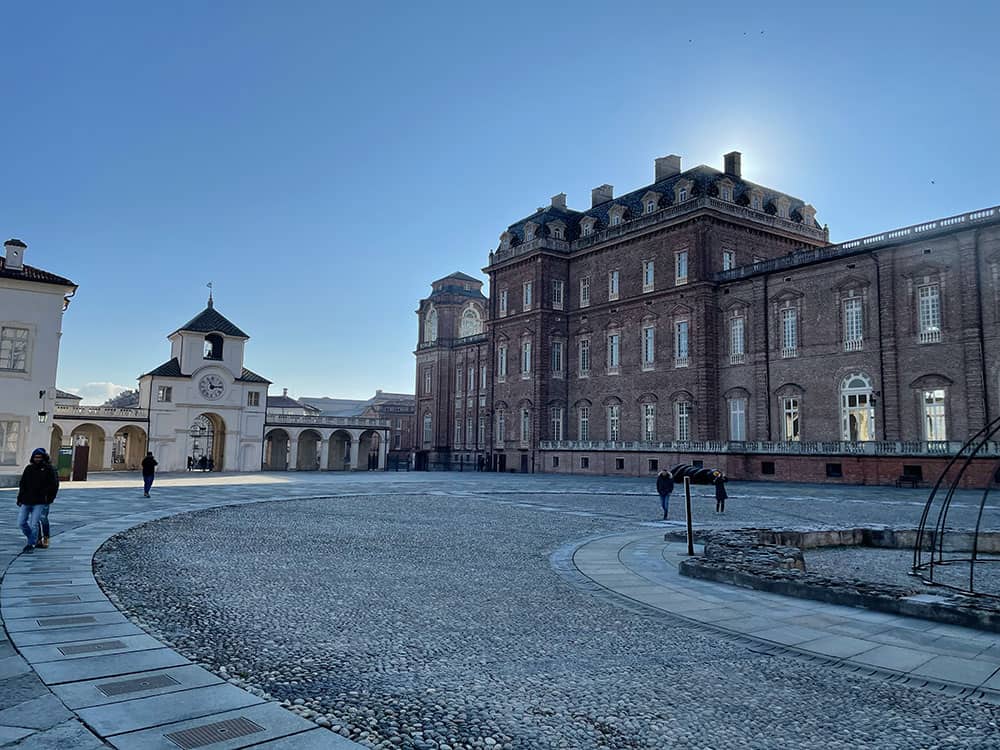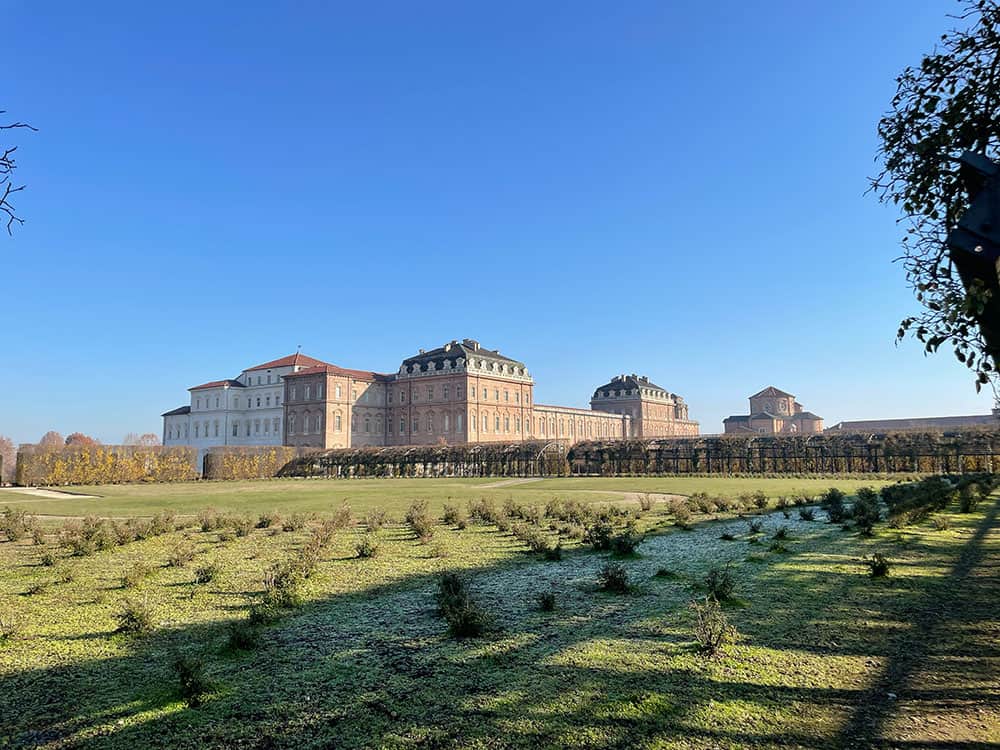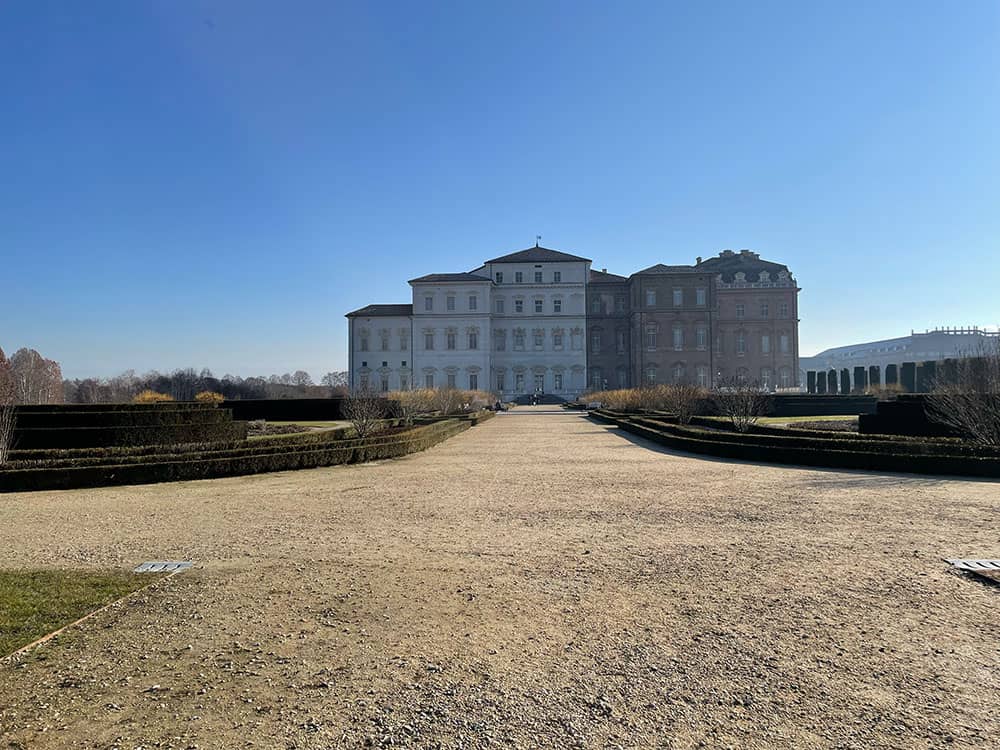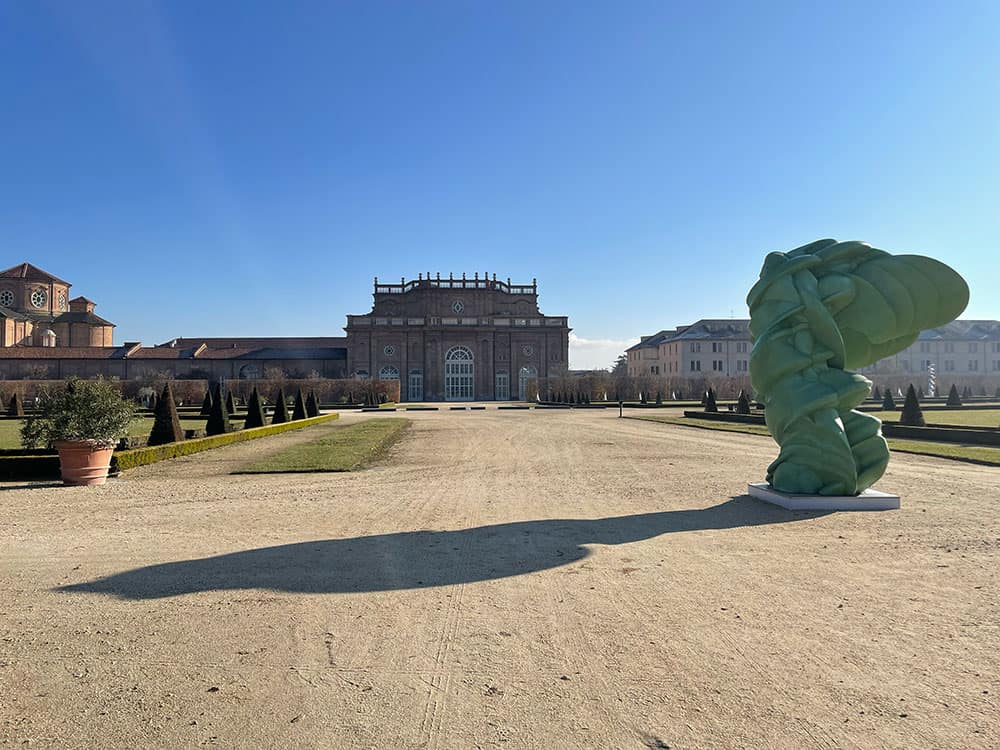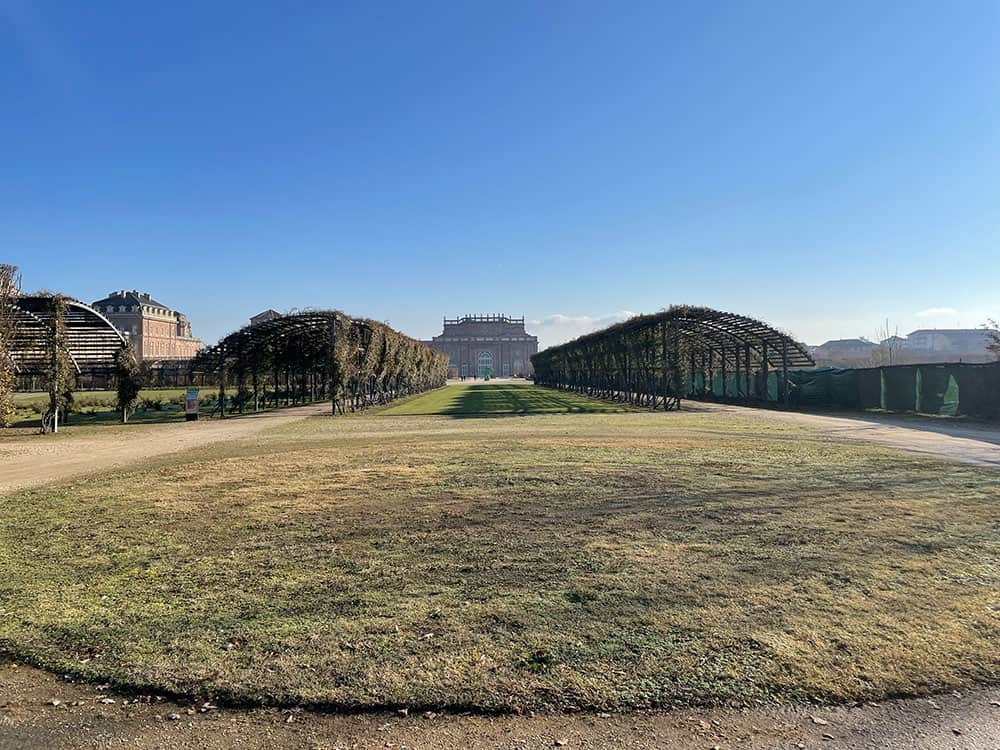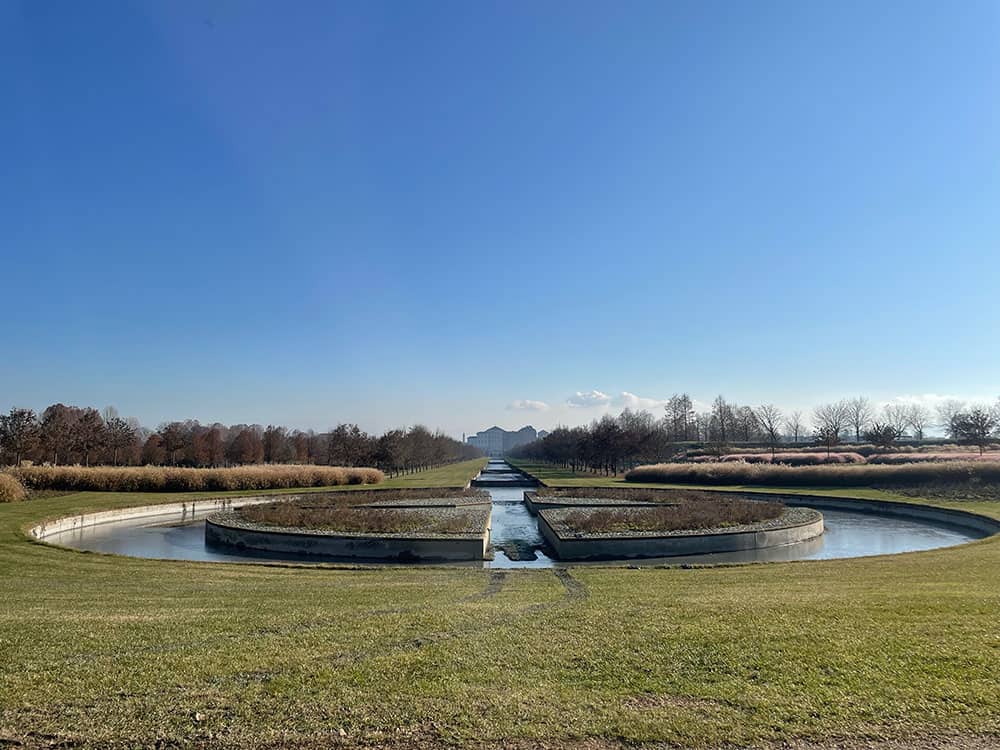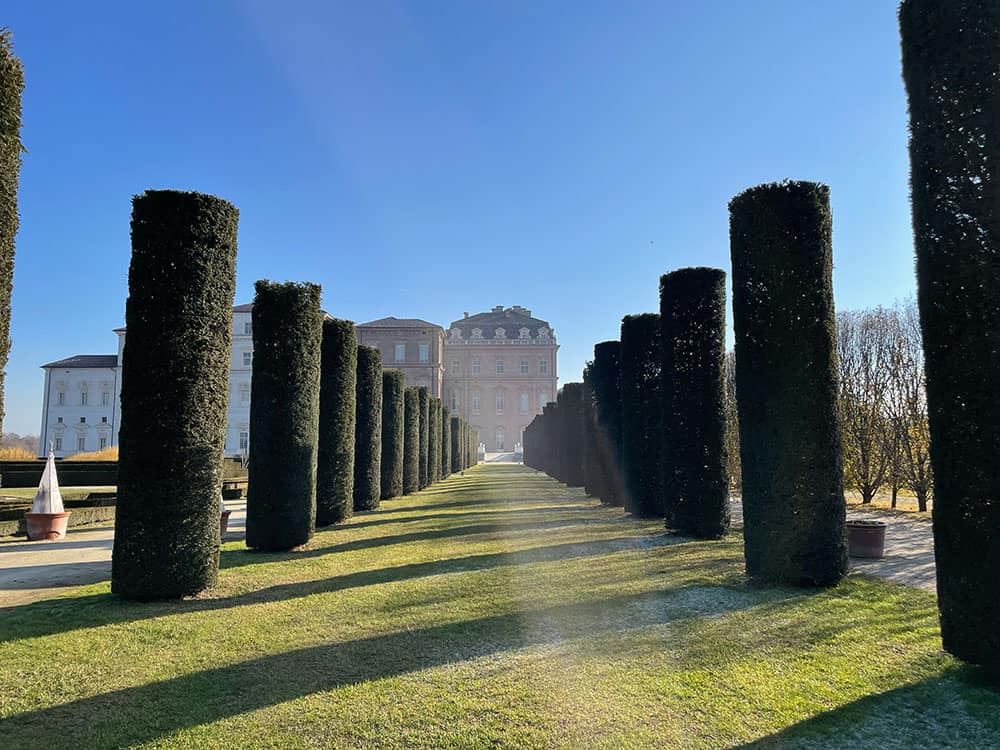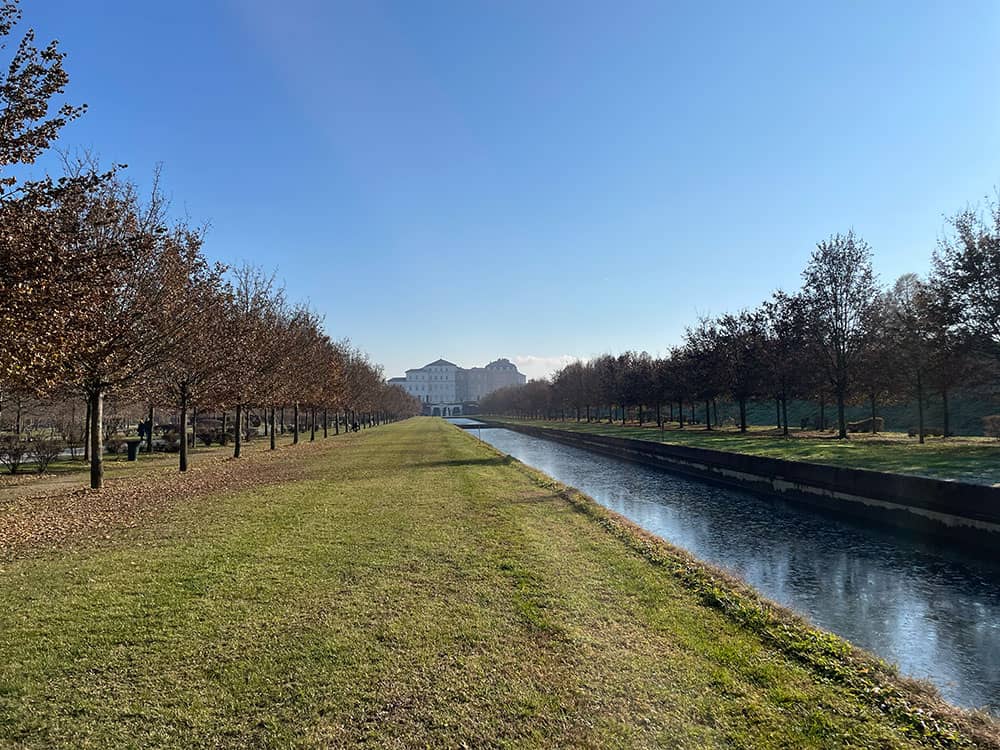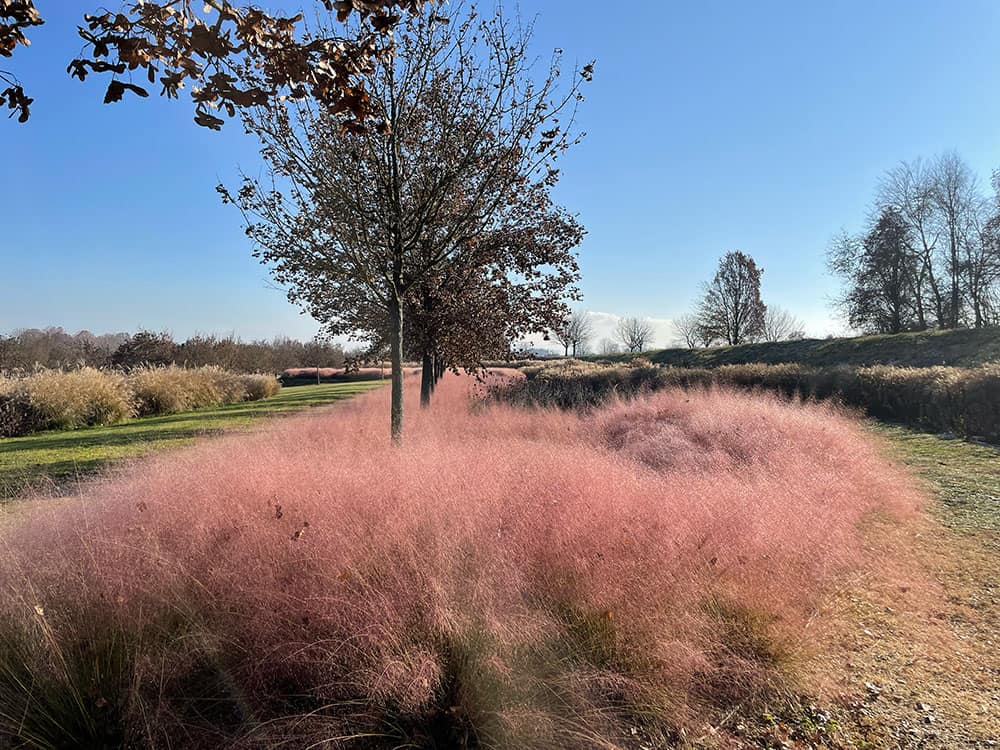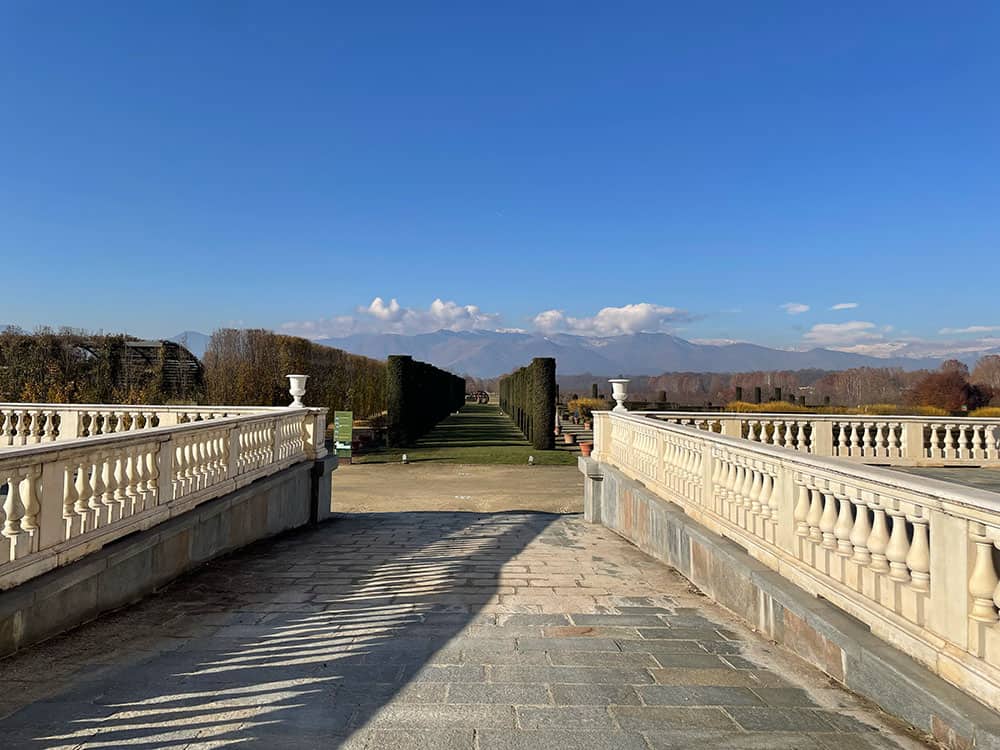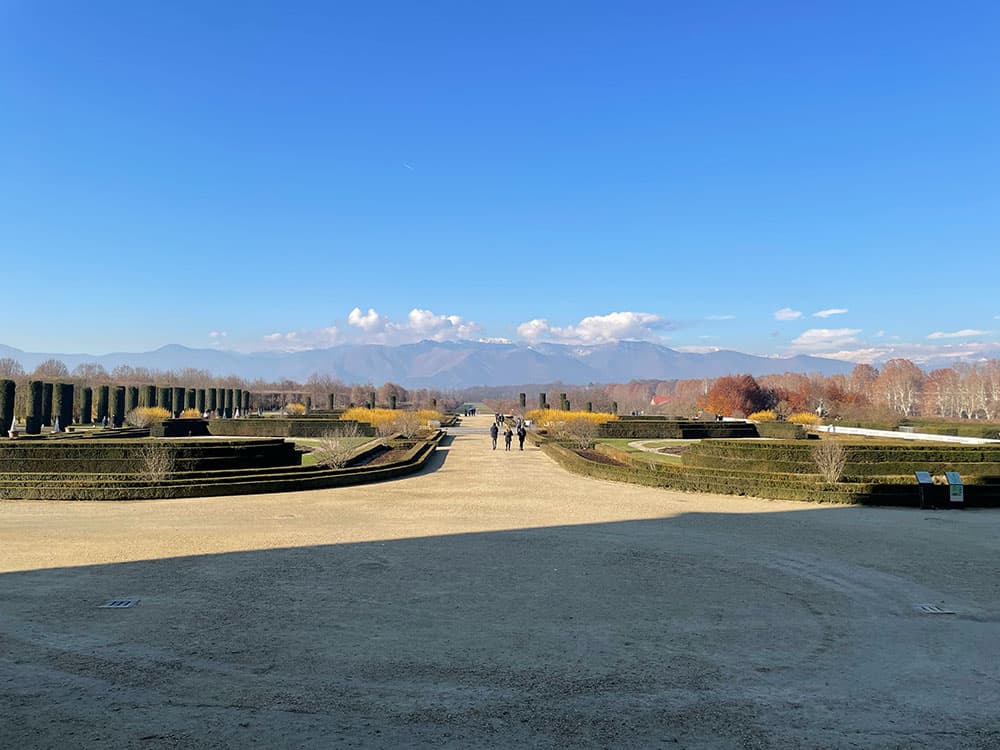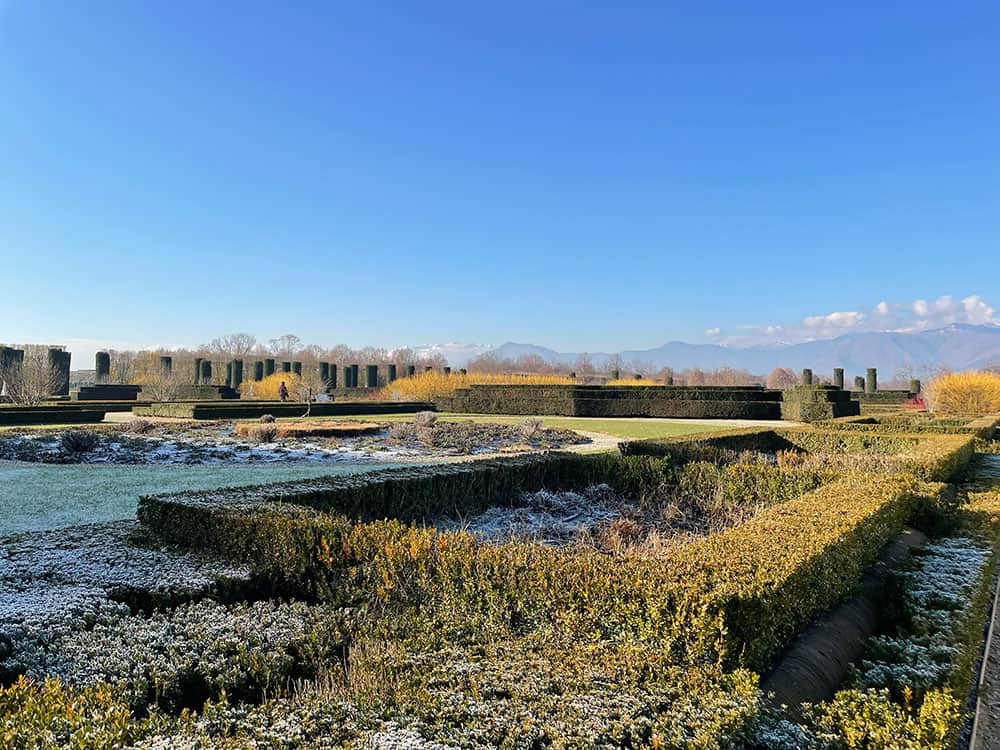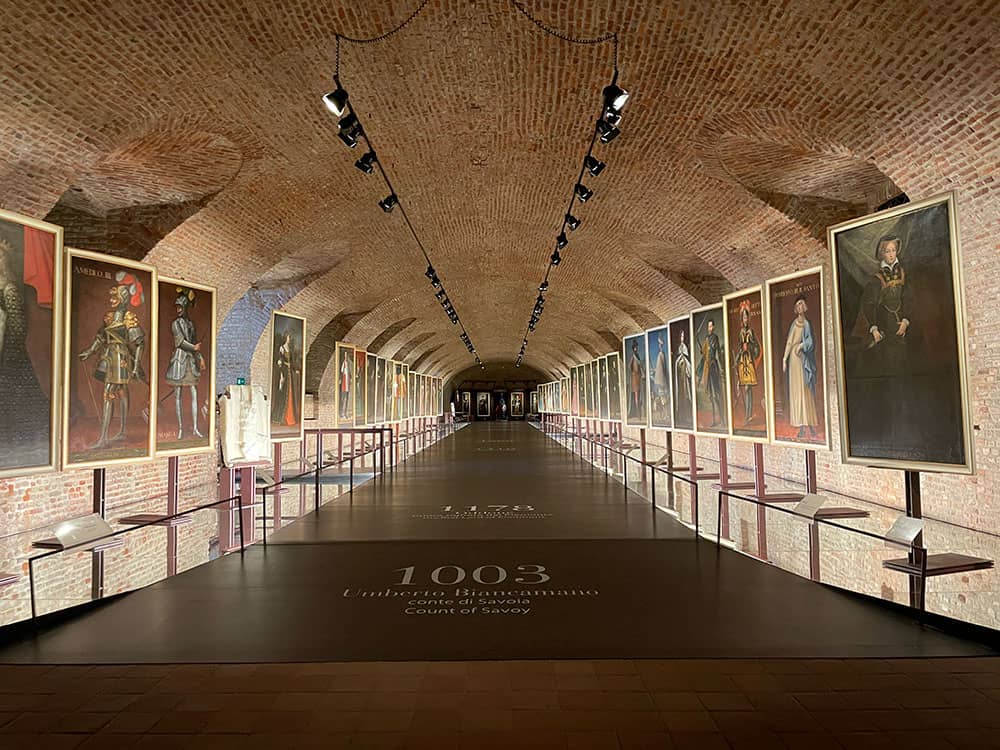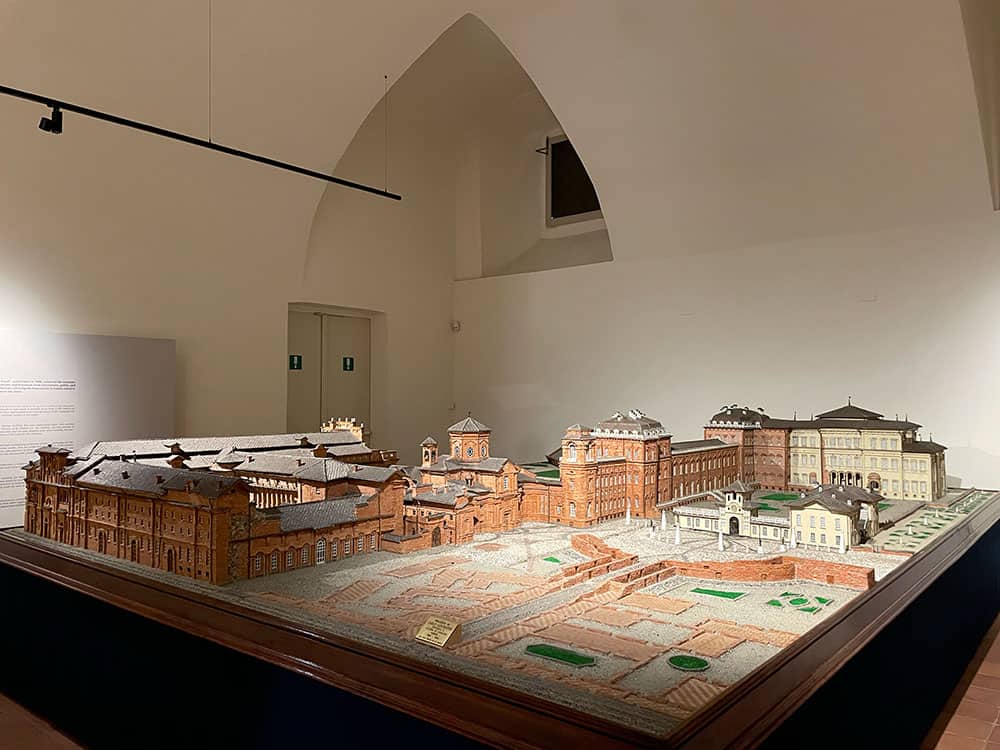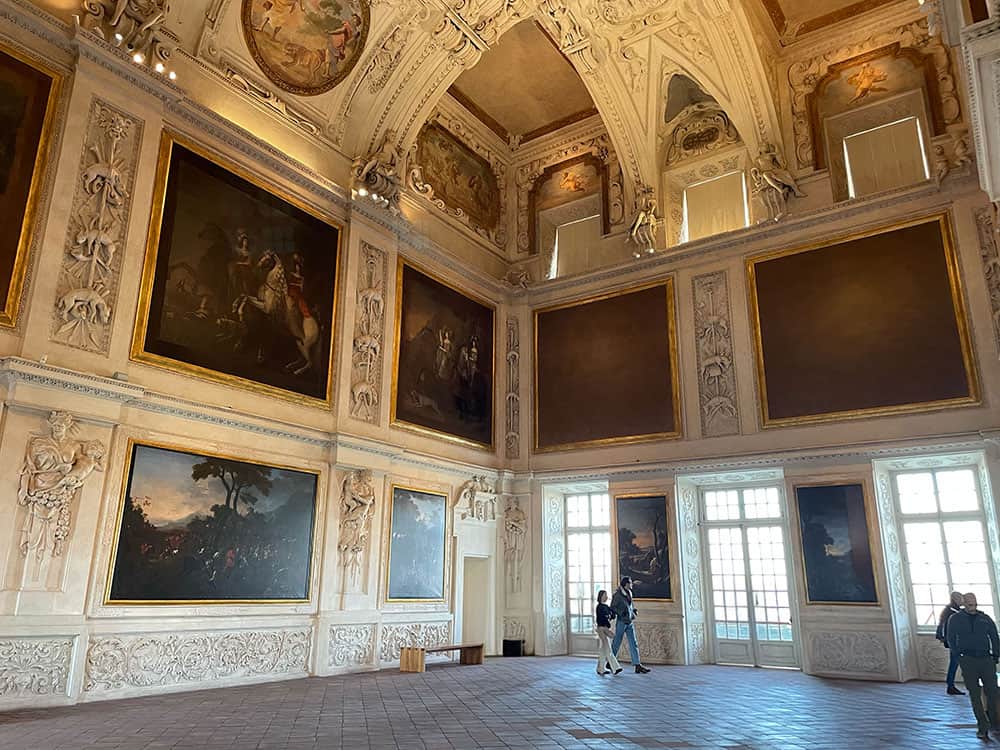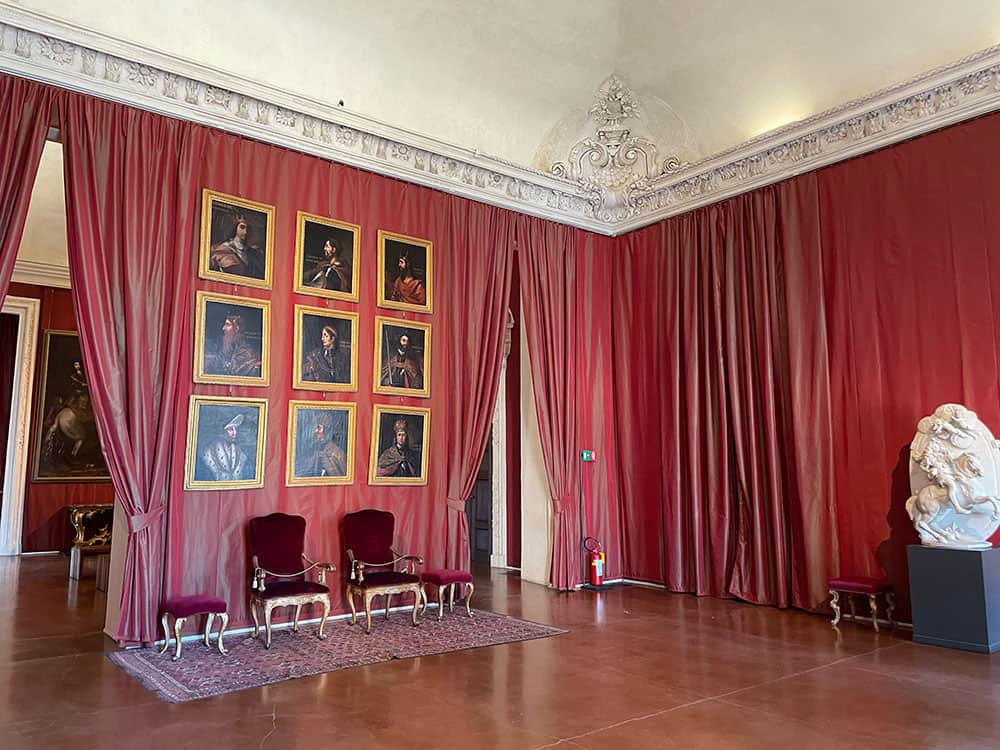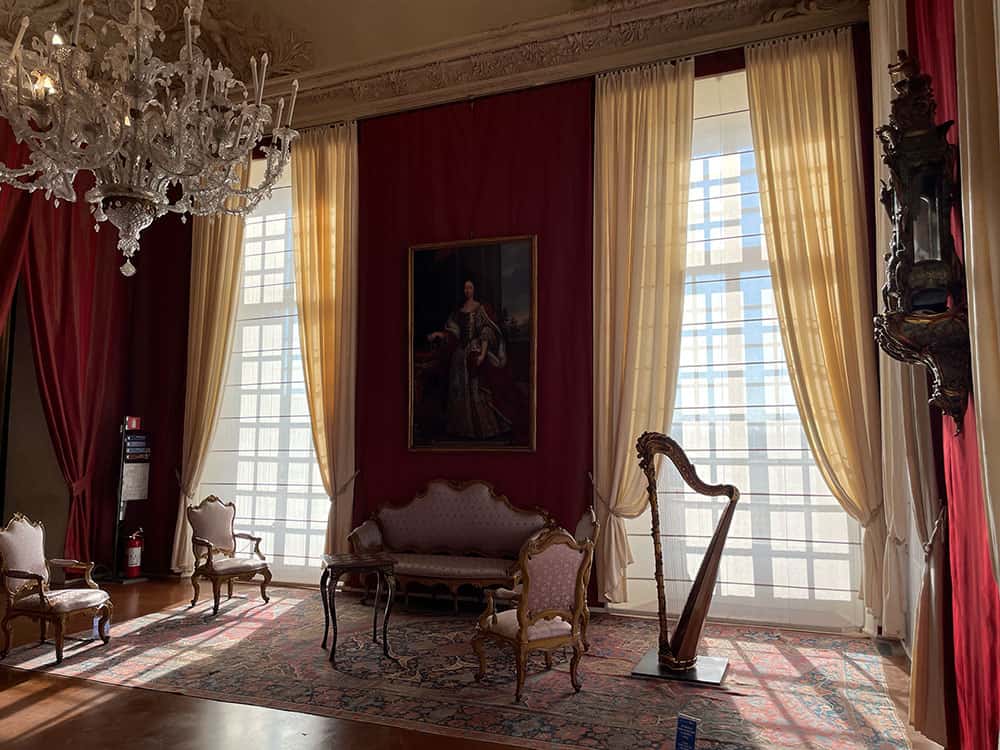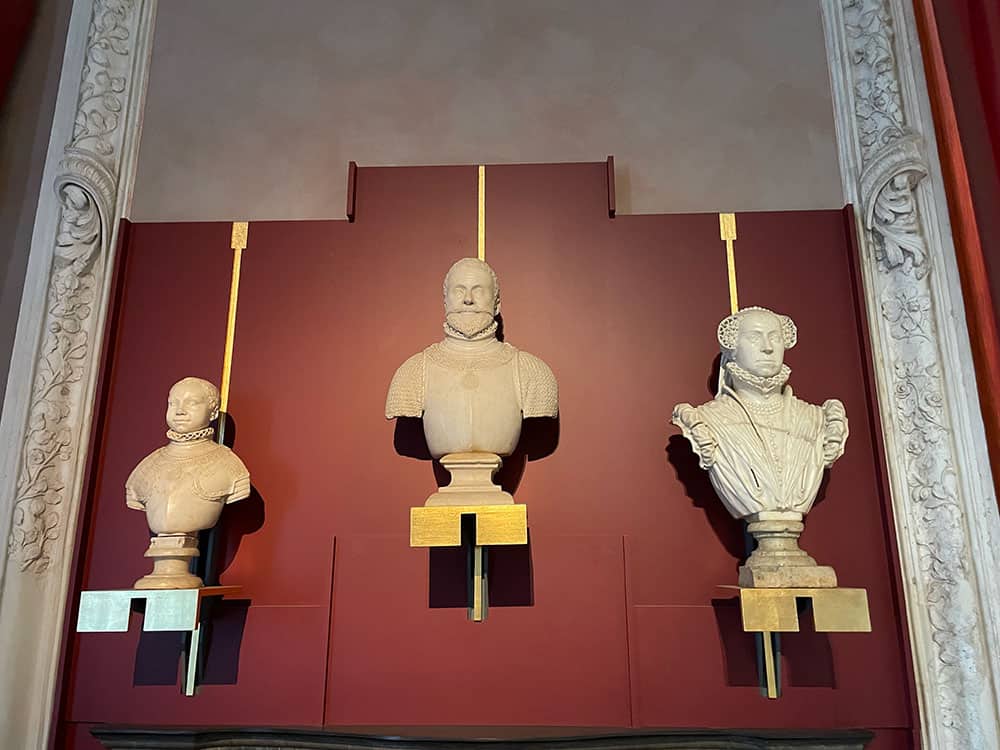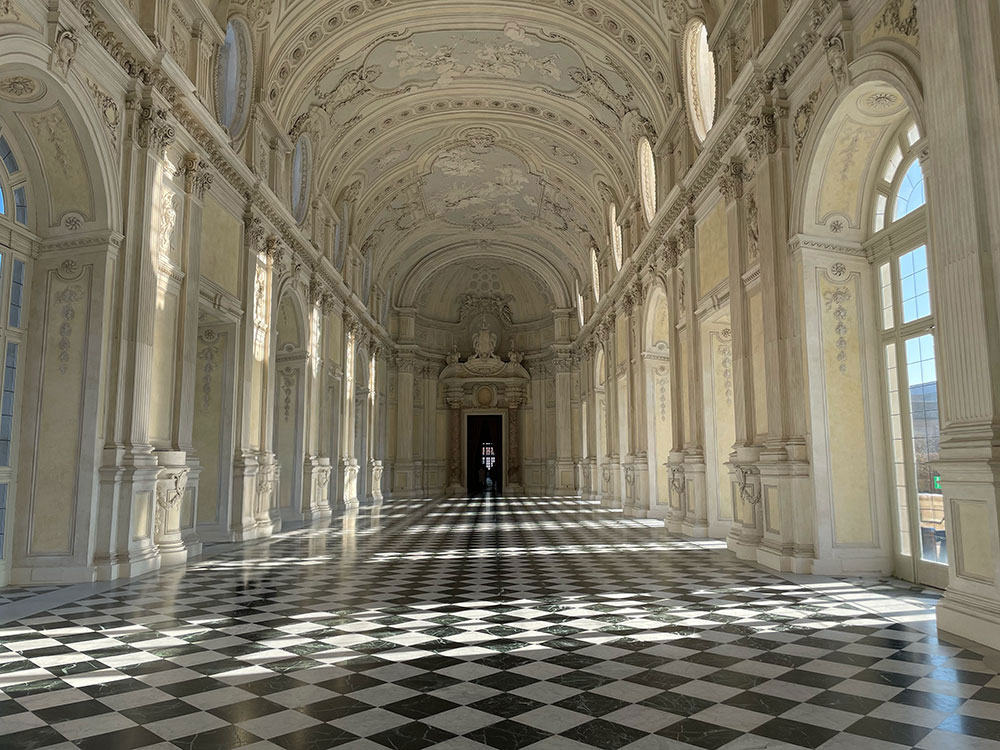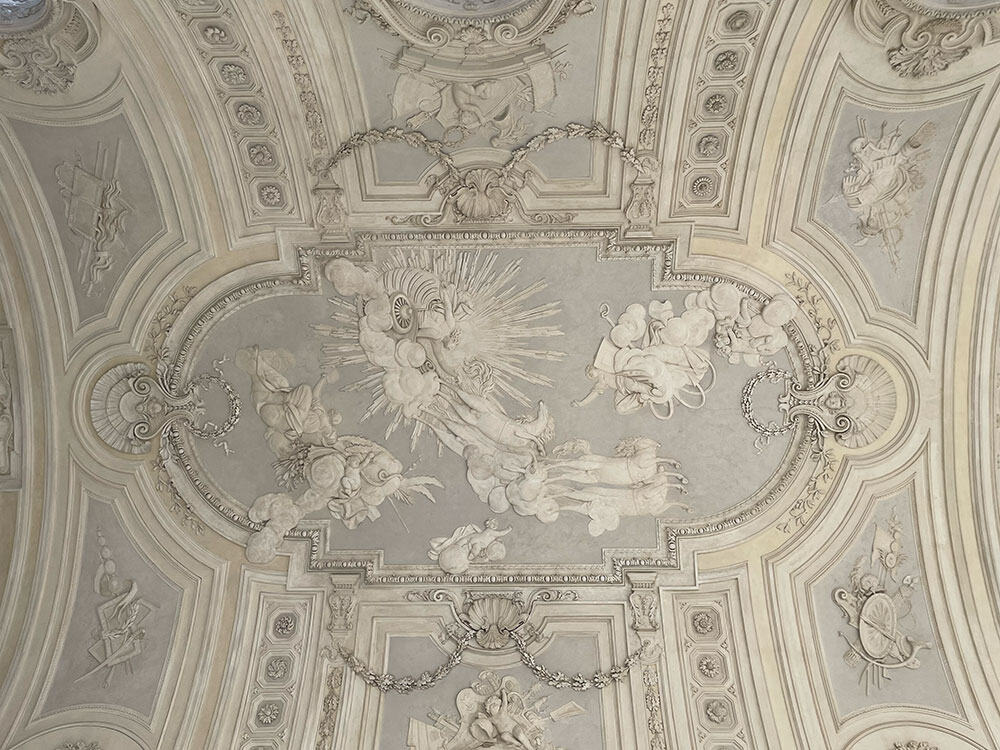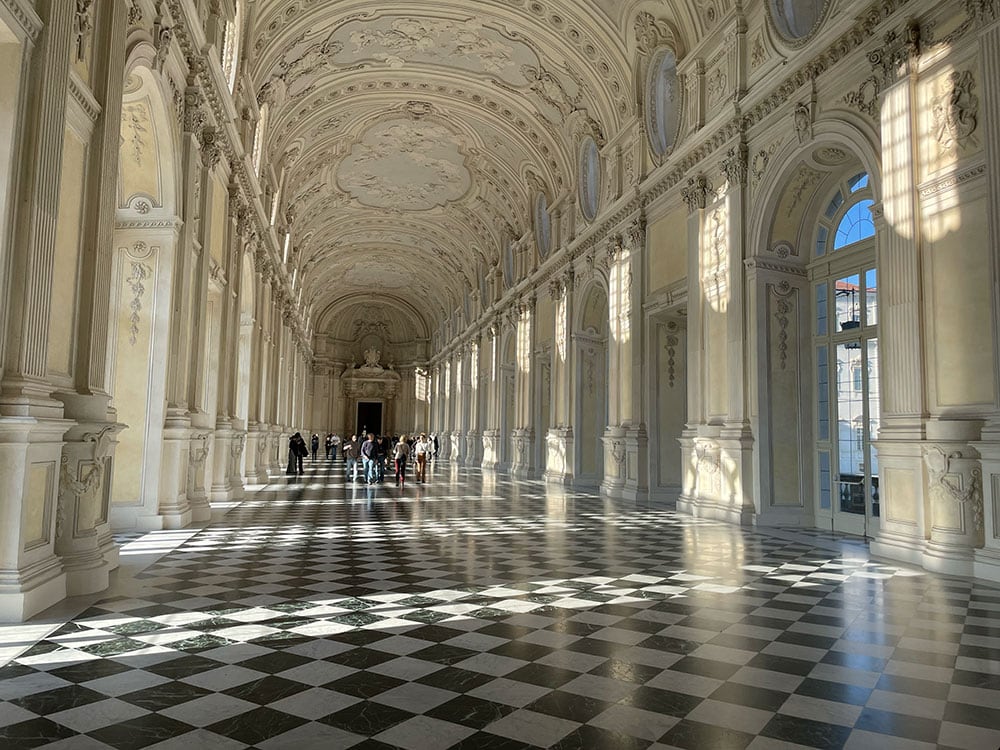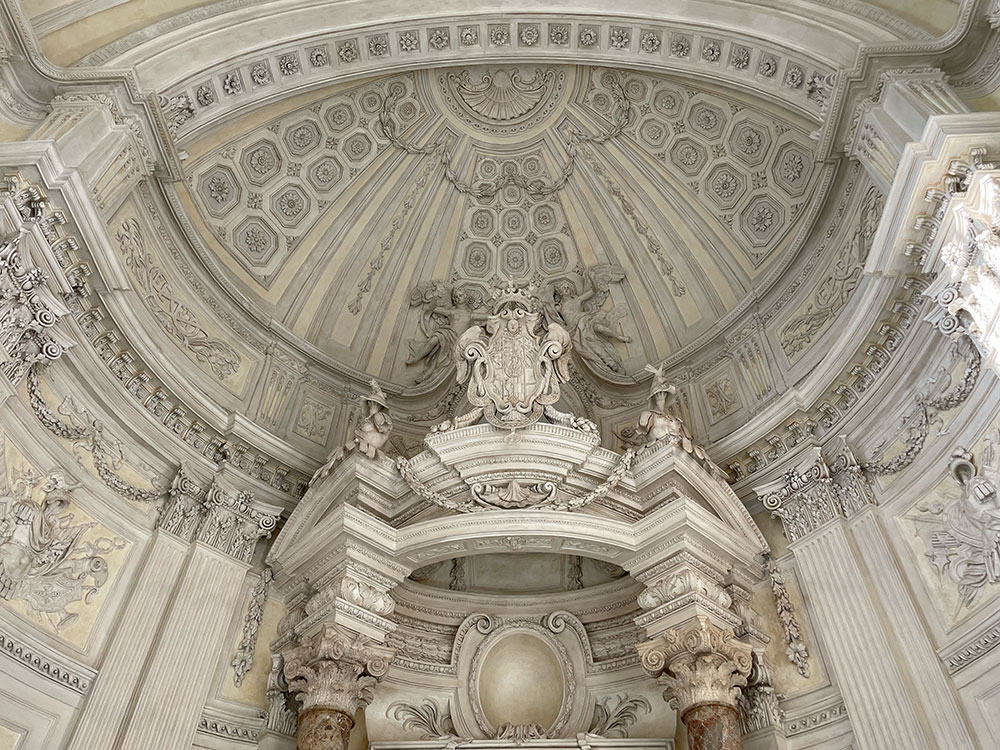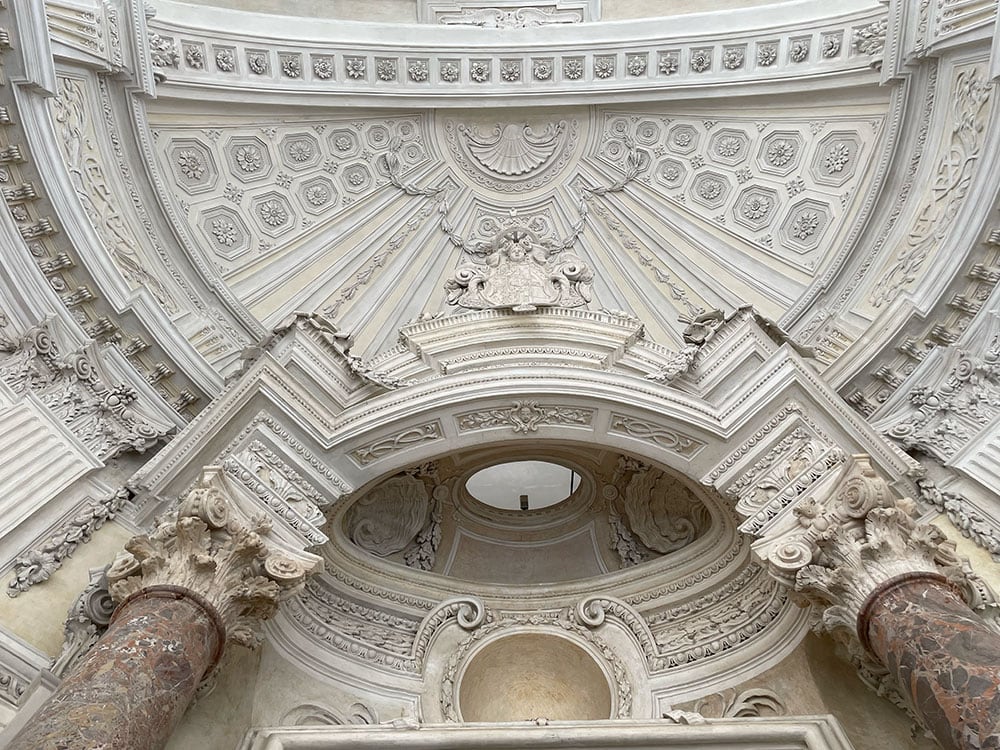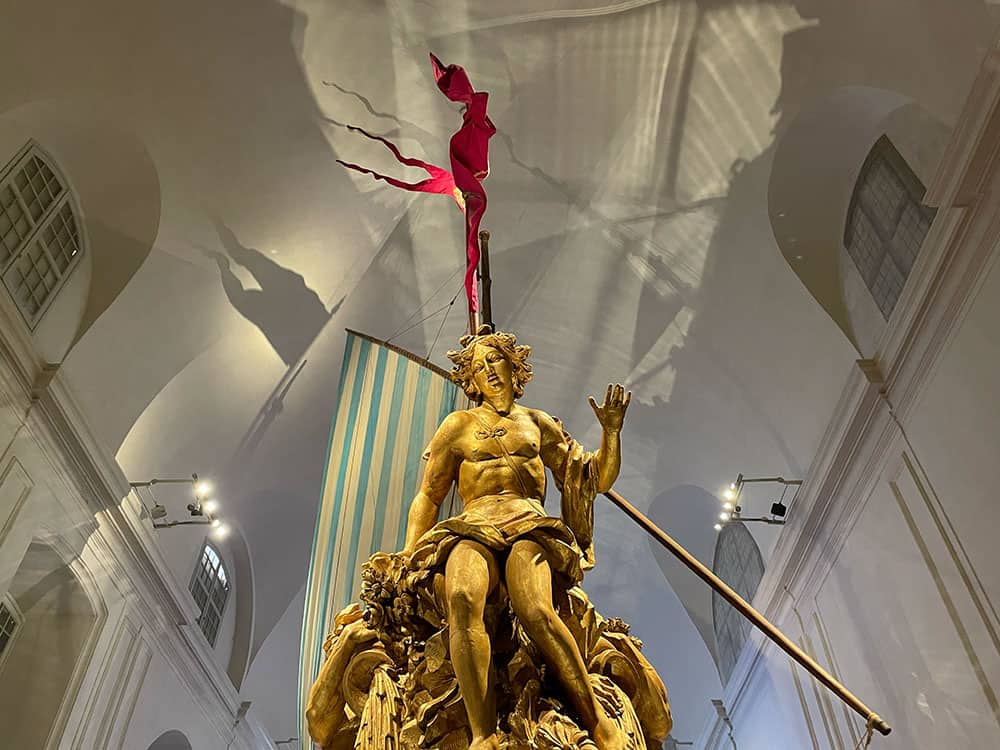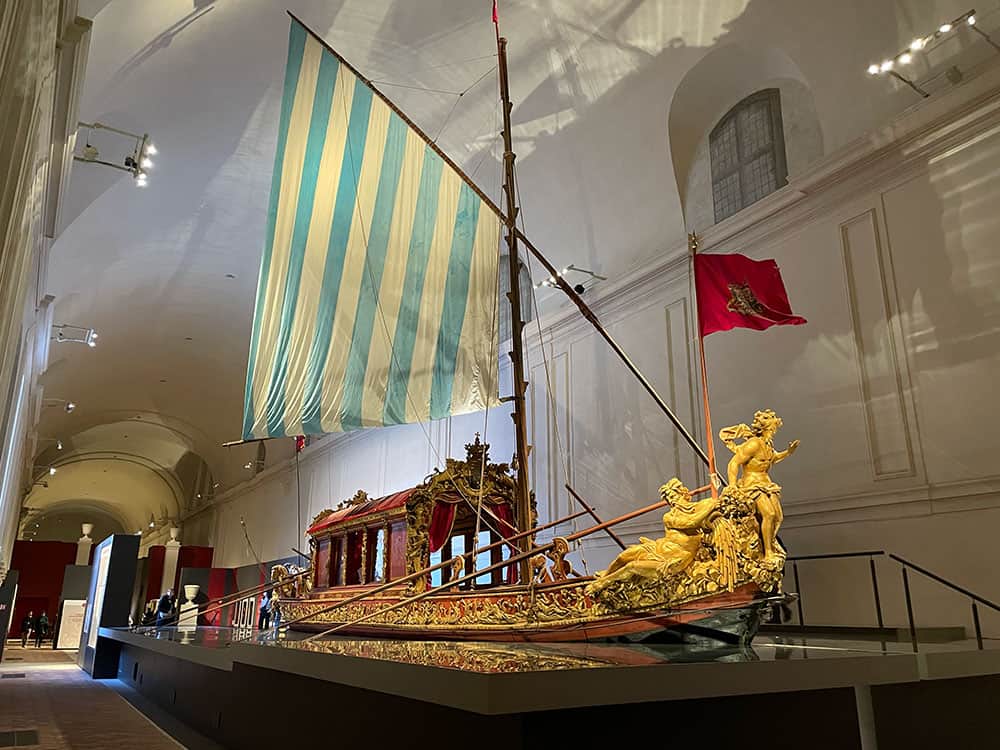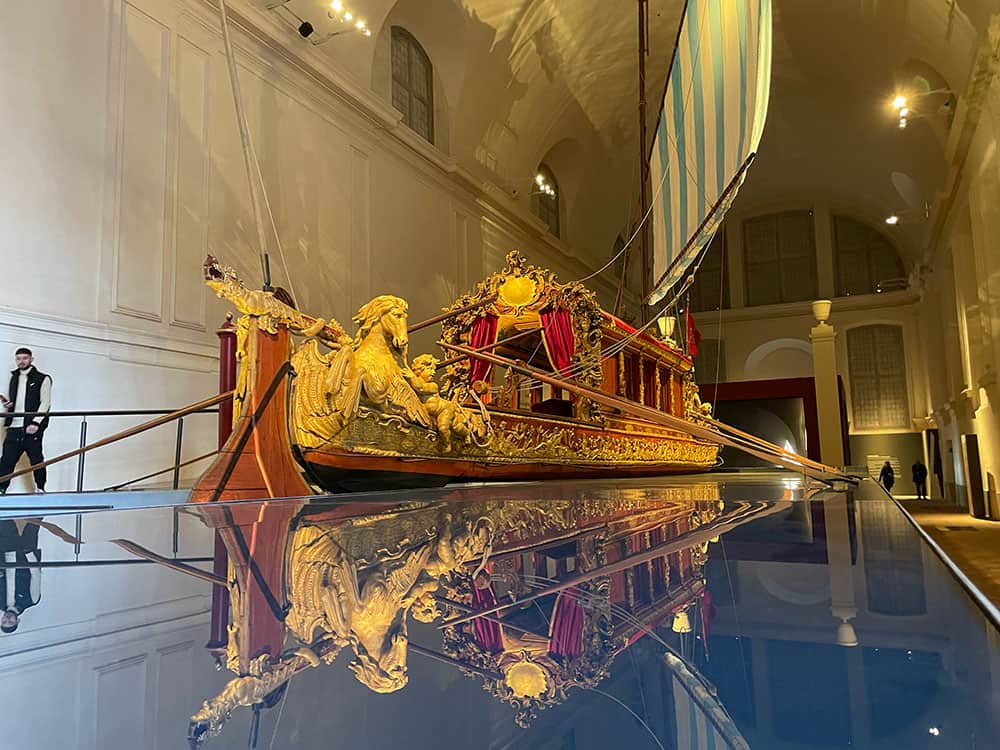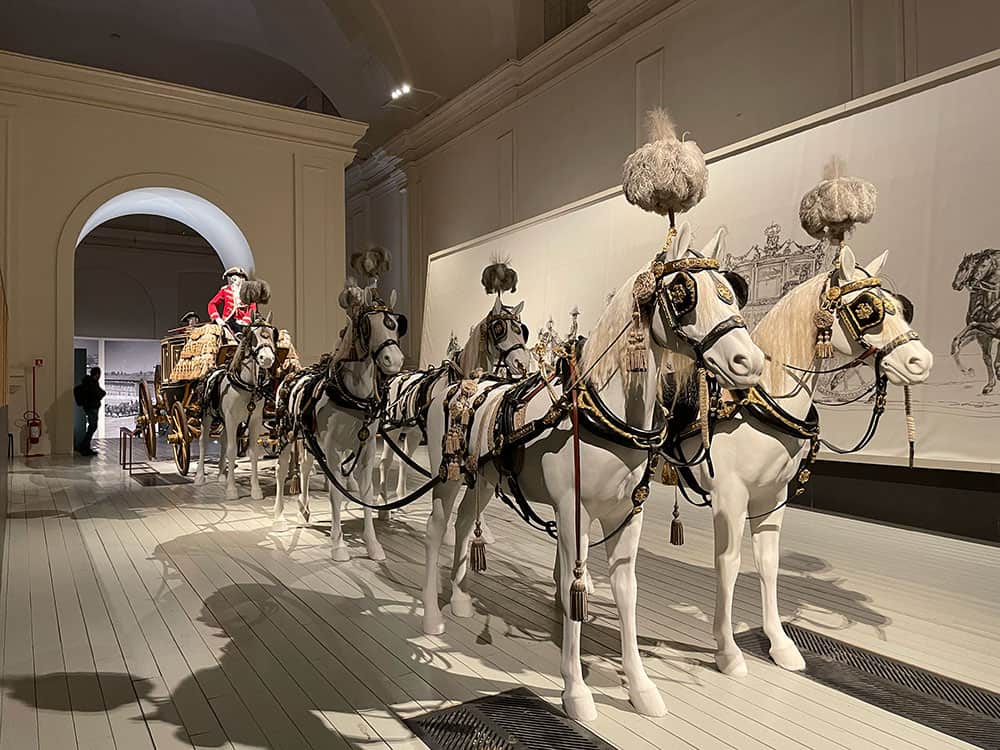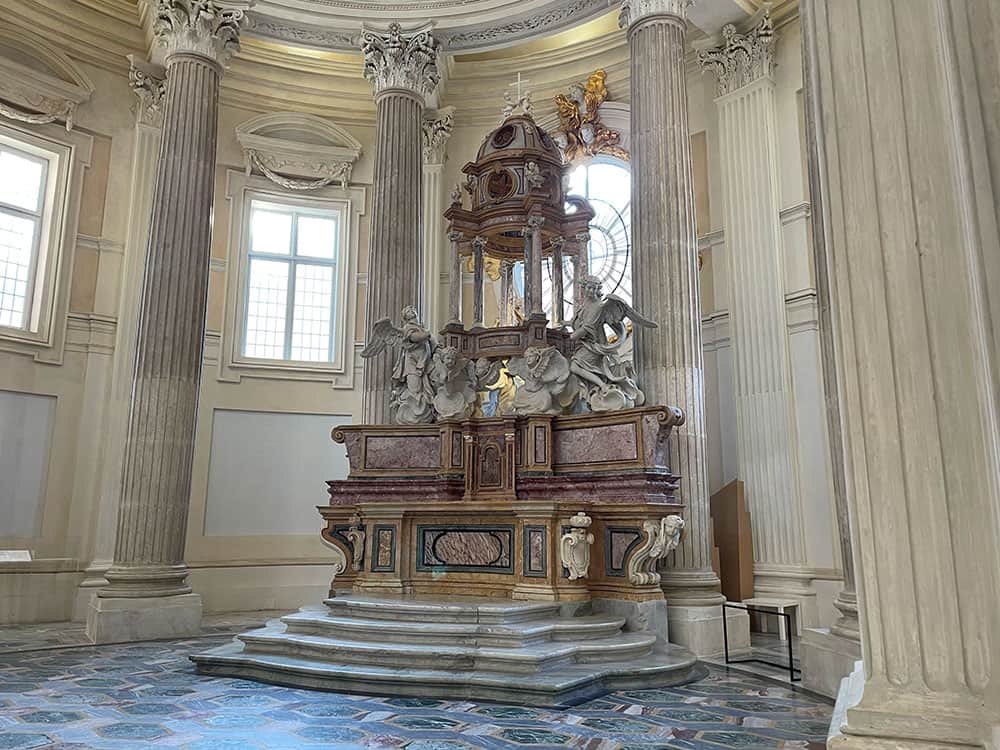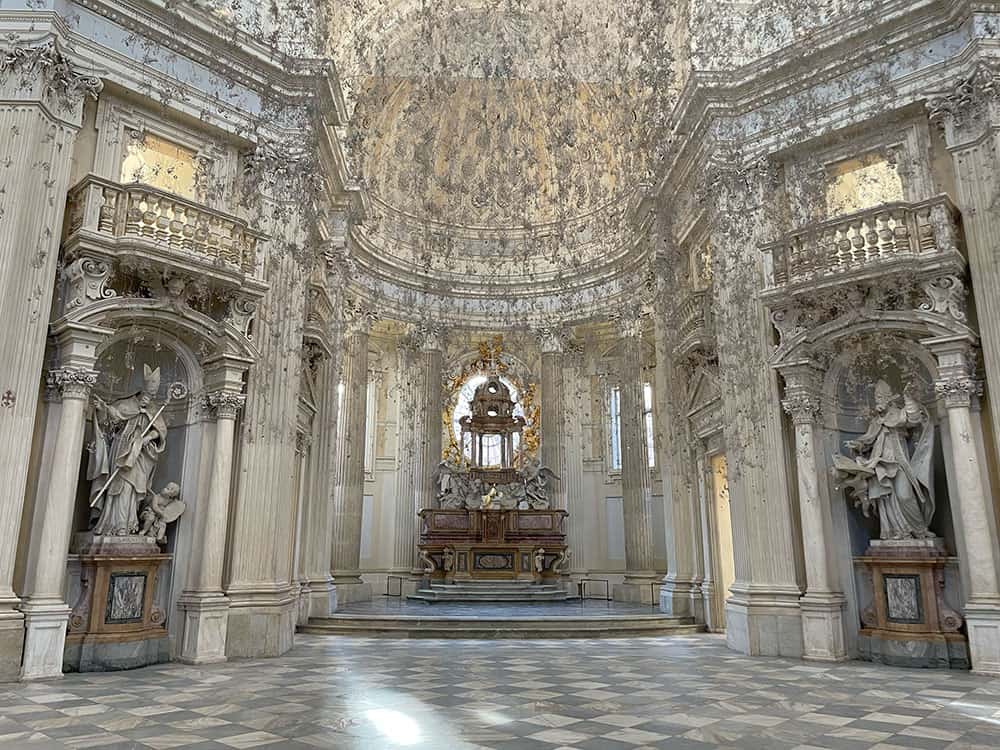Let me start this article with a complaint: if the palace we are about to discuss were located a few kilometers from Paris (and yes, the reference to Versailles is obvious), the whole world would line up eagerly to visit it. However, the Venaria Reale is near Turin, and we Italians, overflowing with artistic treasures as we are, often treat our numerous palaces and castles like old, forgotten scarves tucked away in a drawer.
Luckily, UNESCO occasionally steps in to wake us up, tapping us discreetly on the shoulder to remind us that 80,000 square meters of residence and 60 hectares of gardens might deserve some attention and a little publicity.
Thanks to its inclusion in the UNESCO World Heritage List in 1997, the largest conservation project ever undertaken in Europe began (completed in 2007). Today, La Venaria is among Italy’s top five most visited UNESCO sites.
Between the 16th and 18th centuries, about 15 luxurious residences were built around Turin, serving the dual purpose of entertaining the Savoy court and controlling the surrounding territory. Among these, the Venaria Reale stands out for its grandeur and opulence. It was designed by Amedeo di Castellamonte for Duke Carlo Emanuele II to demonstrate the incredible power of the House of Savoy.
This impressive example of a ducal residence and 17th-century architecture showcases some of the highest expressions of universal Baroque. The name, Venatio Regia, means “royal hunting lodge” in Latin, and this luxurious residence was conceived in 1660 as the starting point for hunting excursions in the nearby Mandria estate.
In the early 1700s, the palace was radically redesigned by Victor Amadeus II, the first Savoy to bear the title of “king.” With the ancient Duchy of Piedmont transformed into the Kingdom of Sardinia, Victor Amadeus II sought to equip the state with buildings to rival Europe’s capitals. He turned to a true genius of the time, the architect Filippo Juvarra, to transform the 17th-century villa into a magnificent royal palace.
During the 18th century, the palace’s majestic beauty inspired other European courts architecturally. At its peak, the imposing residence housed not only a dozen royal family members but also a vast array of people of every rank and occupation. These included 16 knights, 13 senior squires, 13 junior squires, 13 official tasters, 12 chamber assistants, 6 clerks, 13 ladies-in-waiting, ushers, valets, domestic staff, hairdressers, inspectors, and even a steward.
The palace also employed kitchen staff, table attendants, a butcher, a baker with his apprentices, and even a “roof keeper” and a “cow custodian”—a detailed roster indeed!
With the arrival of Napoleon’s troops in 1798, the Venaria Reale ceased to serve as a royal residence. Its decline began in the early 19th century when it was overshadowed by the Hunting Lodge of Stupinigi.
By 1804, the residence was in complete ruin: it was dismantled piece by piece to furnish the Royal Palace of Turin, chosen to host Napoleon should he pass through the region. After decades of abandonment, a massive restoration project, as previously mentioned, brought the site back to its former glory.
The restoration included recovering nearly a thousand frescoes, restoring almost ten kilometers of stuccoes, and refurbishing 100,000 square meters of surfaces. Quite the undertaking!
As some may know, Turin is one of Italy’s most mysterious cities, steeped in esotericism and Freemasonry. It is said to form part of the triangle of white magic (along with Prague and Lyon) and the triangle of black magic (with London and San Francisco).
The palace itself holds esoteric significance: the map of the surrounding old village was designed in the shape of the Collar of the Most Holy Annunciation, the emblem of the Supreme Order of the Most Holy Annunciation. This is the oldest and most prestigious order of the House of Savoy, with roots tracing back to ancient Egyptian traditions.
The Supreme Order of the Most Holy Annunciation is one of four illustrious orders, alongside the Order of the Garter, the Order of the Golden Fleece, and the Order of St. Michael. Twenty large collars exist for the knights awarded the title, and these must be returned to the Grand Master upon the knight’s death.
Some of you may recall the story of the Toson d’Oro, which we shared when discussing the Church of Santa Maria dell’Incoronata in Sabbioneta. During the chapel’s restoration in 1988, the precious emblem was unexpectedly found on the skeleton of Vespasiano Gonzaga—apparently, not everyone remembered to return their collars! The joy of wearing the emblem of their knightly title for eternity seems to have outweighed adherence to tradition in some cases.
The visit to La Venaria begins at the gates in Piazza della Repubblica. Facing the Clock Tower above the gates, you’ll notice a recurring symbol in many depictions throughout the palace: the Savoy Knot. This motif, which represents a particular way of tying ropes, served as a distinctive emblem of the Savoy family.
It’s said that Amadeus VI of Savoy, who lived in the 1300s, introduced this knot into the family’s crests and symbols. Interestingly, the same knot can be seen in the paving below the Royal Waiting RoomSala Reale in Milan’s Central Station : A waiting room worthy of a king at Milan Central Station, where members of the Savoy family once awaited their trains.
After passing through the gates, you’ll find yourself in the Courtyard of Honor. From here, we chose to head straight to the gardens. As you can see from the images we’ve shared, we visited in winter and opted to enjoy the mild sun during the warmer hours, saving the interiors for the afternoon.
Although winter isn’t the ideal season to appreciate the gardens’ full splendor, the sheer vastness and meticulous care of these outdoor spaces make them captivating even in a less favorable season.
Inside, located on the Noble Floor, you’ll find the portrait gallery of the Savoy family (one of the world’s longest-reigning dynasties)
and the Great Gallery (also called the Diana Gallery), designed by Filippo Juvarra. Undoubtedly the most enchanting spot in the palace, its architecture transports visitors into a fairytale setting with gilded mirrors and a black-and-white diamond-patterned floor.
Clearly inspired by the Hall of Mirrors at Versailles, this magnificent corridor stretches 80 meters long and features a marble floor, countless stuccoes, and 44 windows. The corridor connects the king’s apartments to the heir’s quarters, bathing in light even during the short, dark days of winter.
The Stables of the Venaria Reale are another must-see. This enormous hall, 148 meters long, 12 meters wide, and 15 meters high, could accommodate around 200 horses, essential for hunting activities.
The real attraction of this space is the Bucentaur, displayed on a mirrored base that evokes the reflection of water—a vision of sublime kitsch!
The Bucentaur was a ceremonial gondola, richly decorated with carvings, gilded sculptures, velvet, and other luxurious details, originally used by Venetian doges. The Venaria Reale holds one such example, built for royal processions along the rivers. Its first public appearance was in 1734 with King Charles Emmanuel III.
Juvarra also designed another masterpiece at the Venaria Reale: the Chapel of Saint Hubert, built between 1716 and 1729 and dedicated to the patron saint of hunters, reflecting the hunting-focused purpose of the residence.
The Sicilian architect’s flair for light and scenic effects is evident here: by playing with light and architectural elements, Juvarra created a symbolic, evocative, and theatrical space. For instance, a trompe-l’oeil fresco above the drum compensates for the lack of space required for a true dome.
Our advice? Take your time exploring. Stroll through the gardens, savor the grandeur of the architecture, and gather insights about the House of Savoy, whose influence has shaped much of Italy’s history.
The House of Savoy ruled over Italy from 1861 to 1946—a relatively brief monarchy of just 85 years, spanning the country’s unification to the end of World War II. However, the dynasty is actually Europe’s longest-reigning royal family.
Their great fortune lay in their role as a buffer state near the Alpine passes, dividing Europe’s major powers. Through astute political alliances and strategic marriages, the small and impoverished Savoy state managed to transform itself into a true kingdom.
Following the end of World War II, a 1946 referendum saw Italians choose a republican government. The royal family lived in exile until March 15, 2003, when the Savoys returned to Italy after 57 years.
For us, as a couple of Boomers, monarchy doesn’t hold much fascination, and the more recent members of the dynasty haven’t exactly distinguished themselves. Their public appearances often leave them looking more like tragic figures than members of Italy’s once most powerful aristocracy. For instance, Emanuele Filiberto, the last scion, wasn’t taken seriously for the political roles he proposed but instead found success participating in various reality TV shows on commercial networks.
However, for the curious, there’s already a Netflix series about his father, Vittorio Emanuele di Savoia, and the events surrounding him—not all of which are flattering. Definitely worth watching!
Don’t let the modern-day Savoy family’s lackluster reputation deter you from appreciating the magnificence of what their ancestors left behind. Their artistic legacy continues to shine in all its splendor.
Visit the Venaria Reale (stress on the “i”) in spring if you want to admire the gardens at their peak beauty, or, if you’re romantics like us, go in autumn or winter to appreciate the design and the silent, rarefied atmosphere.
Either way, it’s a true masterpiece.
Betti
How to get there:
Official Web Site (here you can purchase tickets online) : link

